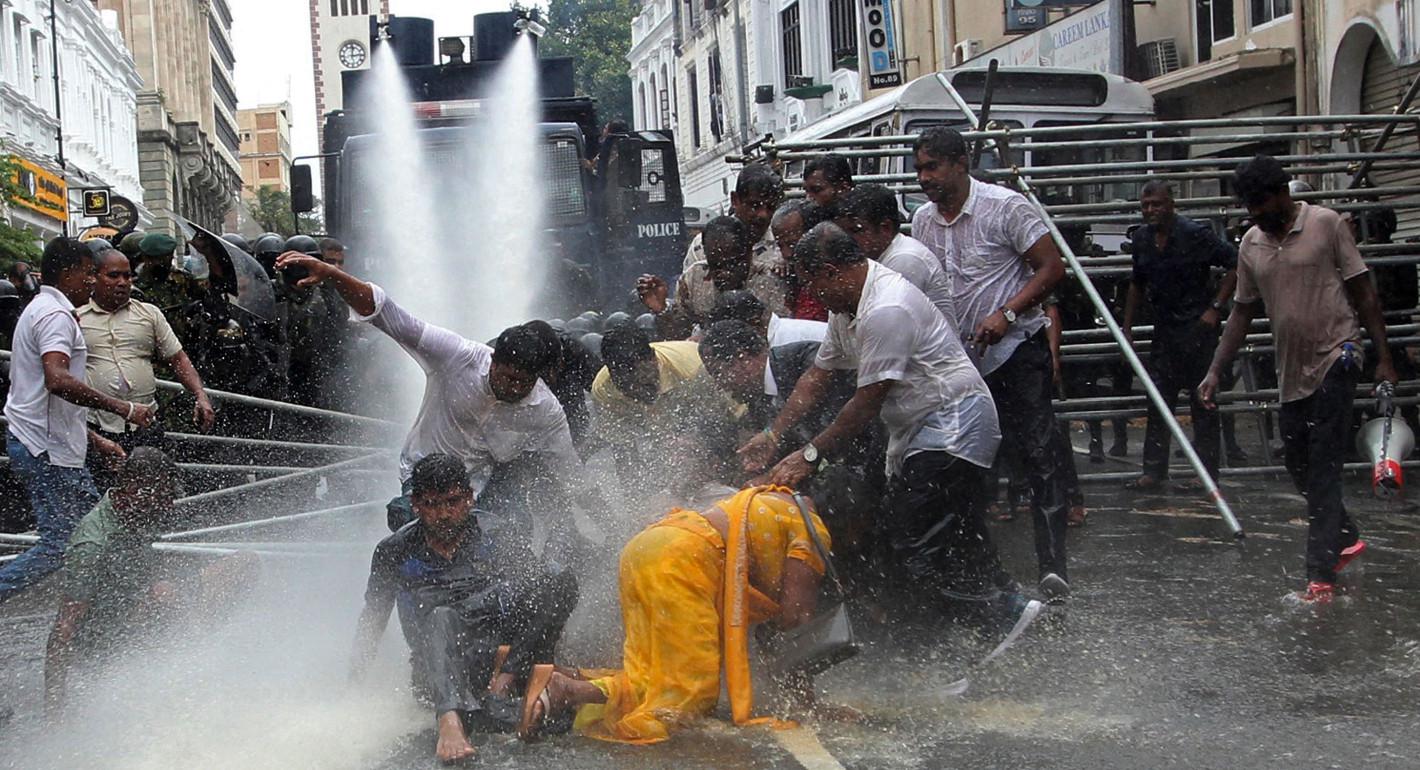Rising citizen anger about economic problems, especially surging inflation, drove antigovernment protests to a new high in 2022. Data from the Carnegie Endowment’s Global Protest Tracker shows that the number of economic protests—especially those relating to inflation—soared compared to previous years.

While many of the largest economic demonstrations took place in Europe, including in Belgium, France, Germany, and Spain, protests erupted in nearly every region of the world.

In most inflation-related protests, frustrated citizens rallied under the banner of a labor union, trade association, left-wing party, or pro-reform organization that pushed the government to address the broader problems of low wages, inequality, or corruption. These protests called for wide-ranging government solutions such as greater economic support for the poor and working class or for their profession. In a small number of cases—such as the Czech Republic, Germany, and Moldova—protesters rallied under the banner of a right-wing party or coalition that called on the government to change its pro-Ukraine posture, which they claimed is responsible for driving up fuel prices and therefore exacerbating inflation.
Economic protests in 2022 were generally short-lived: approximately one-half lasted a week or less, while under one-third lasted longer than a month. In four of the five preceding years, only about 20 percent of economic protests lasted a week or less.

The distribution of economic protest durations in 2022 was similar to that of 2020. This may not be coincidence: national calamities can trigger protests, but neither the economic crises of 2020 (related to supply chains and labor shortages), nor those of 2022 (concerning rising prices of fuel and food) pointed to clear solutions that would give protests staying power in the streets.
The complexity of the economic disruptions motivating protests and the difficulty of mounting an effective government response to them may also explain why this year’s protests—52 percent of which were triggered by economic issues—had a low success rate. Fewer than one in six major antigovernment protests caused the government to modify relevant policy or provoked a leadership change, which are the thresholds that the Global Protest Tracker uses to register an outcome as significant.
Sri Lanka and Kazakhstan were two important exceptions. In the first, massive, persistent protests that began in March eventually led to the ouster of president Gotabaya Rajapaksa, prime minister Mahinda Rajapaksa, and all twenty-six ministers in the cabinet. In the second, protesters forced Nursultan Nazarbayev, president of Kazakhstan from 1991 to 2019 and the power behind the throne thereafter, to relinquish his grip on the country. Nazarbayev resigned from his post as chairman of the Security Council in January.

This low level of significant outcomes is one part of a notable longer-term trend in global protests generally. In a broad study of civil resistance movements over decades, Erica Chenoweth, a professor at the Harvard Kennedy School, found a marked decline in the effectiveness of such movements over time.
Although many protests in 2022 were rooted in larger international economic dynamics, demonstrations globally remain discrete national events rather than products of international movements and have many specificities in their emergence and course. In Sri Lanka, for example, the depreciation of the rupee, soaring prices, and widespread shortages of goods triggered the mass mobilization. Yet it was deep-seated frustration over years of economic mismanagement, especially of debt, that made the movement so potent. In Kazakhstan, protesters took issue not only with the lifting of price caps on liquid petroleum gas but also with the lack of political pluralism and intolerance of dissent.
Finally, authoritarian governments used lethal violence against protesters this year more frequently than other types of governments. Authorities in unfree countries killed protesters—the threshold that the Global Protest Tracker uses for “violent government response”—in 36 percent of protests occurring in such countries in 2022. This number is three times the share in partly free countries and six times the proportion in free countries. In Iran, the world’s most closely watched protest of 2022 erupted following the death of twenty-two-year-old Mahsa Amini in police custody. Hard figures are still difficult to obtain, but credible reports indicate that government security forces have thus far killed more than 450 demonstrators—many of them youth—and arrested at least 18,000, sentencing five to death so far. Lethal violence against protesters also occurred this year in Myanmar, Sierra Leone, and Tajikistan.
Yet authoritarian governments use a wide variety of repressive tactics beyond lethal violence to quash protest movements. According to Human Rights Watch, following Russia’s invasion of Ukraine, Russian police used excessive force while detaining protesters and “inflicted abuse amounting to torture or inhuman and degrading treatment” on those in custody. And in China, where a startling wave of protests in multiple cities broke out in late November over frustrations related to the country’s stringent coronavirus restrictions and wider lack of freedoms, Chinese authorities forcefully broke up demonstrations, arrested peaceful protesters, confiscated phones to search for prohibited apps, and stepped up censorship to try to prevent online discussion of the protests.

